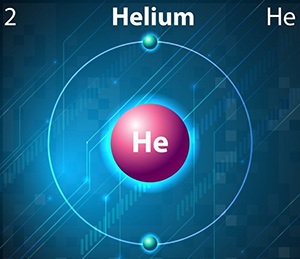OSHA requirements are set by statute, standards and regulations. Our interpretation letters explain these requirements and how they apply to particular circumstances, but they cannot create additional employer obligations. This letter constitutes OSHA's interpretation of the requirements discussed. Note that our enforcement guidance may be affected by changes to OSHA rules. Also, from time to time we update our guidance in response to new information. To keep apprised of such developments, you can consult OSHA's website at https://www.osha.gov.
Pure Gases www.airgas.com Helium (He) A colorless, odorless, nonflammable, inert gas. Airgas Quality Policy The purpose of the Airgas Quality System is to continually improve our manufacturing and related processes to provide our customers with the highest product purity, consistency, and service. Pure Gases Grade% Purity O 2 H 2 THC CO 2 Ar N 2. All have Compressed Gas Association (CGA) numbered inlet fittings for secure connections to compressed gas tanks. Choose a valve with the same CGA number as your tank and other system components. Outlet fittings are Swagelok® for a leak-free seal around hard metal tubing in high-pressure lines. Applications of Inert Gases. There are numerous uses of inert gases or noble gases in various fields specially in the field of metallurgy. Here we are listing few applications of each inert gas separately in many fields – Helium Helium is used for the treatment of asthma, emphysema and other breathing problems. Helium is used in balloons.
January 25, 1995

Richard F. Andree, CSP, PE, Ph.D.
Vice President - Director of Safety and Health Services
Lovell Safety Management Company, Inc.
161 William Street New York, New York 10038-2675



Dear Mr. Andree:
This is in further response to your letter of April 11, to the Occupational Safety and Health Administration (OSHA), requesting guidance on whether an inert gas in the non-compressed state represent hazardous chemicals under the Hazard Communication Standard (HCS), 29 CFR 1910.1200. Your letter specifically inquired about gases such as argon, nitrogen and helium at atmospheric pressure. Please accept my apology in the delay in this response.
OSHA agrees with your statement that inert gases are classified as a simple asphyxiants. Patty's Industrial Hygiene and Toxicology defines a simple asphyxiant as: 'physiologically inert gases that can act principally by dilution of the atmospheric oxygen below partial pressure necessary to maintain an oxygen saturation in the blood sufficient for normal tissue respiration.'
Inert gases, such as argon, nitrogen and helium, have the potential to create a hazardous atmosphere (less than 19.5% oxygen) and, where that potential exists, are considered by OSHA as hazardous chemicals presenting an acute health hazard and covered by the standard. Mac miller wear my hat mp3 download. The HCS would not apply where employees are not occupationally exposed, under normal conditions of use or in a reasonably foreseeable emergency, to the oxygen displacing hazard associated with inert gases. Internet explorer for mac os x download. Obviously, argon, nitrogen and helium occur naturally in the atmosphere, and under those conditions they are not hazardous chemicals.
The HCS requires chemical manufacturers, or importers to assess the hazards of chemicals which they produce or import, and all employers to provide information to their employees about the hazardous chemicals to which they are exposed, by means of a hazard communication program, labels and other forms of warning, material data safety sheets (MSDSs), and information and training. Included in the HCS is paragraph (c) which contains a broad definition of the term 'health hazard.' Appendix A of the HCS also provides further definition and explanations of the scope of health hazards including acute health hazards. Enclosed for your reference is a copy of a February 9, Hazard Communication; Final Rule which contains a number of minor changes and technical amendments to clarify further the regulatory requirements.
Helium Element Noble Gas
You objected to the language in the March 4, 1993, letter to Matthew McFarland stating that toxicity has been established in inert gases, and that the manufacturer, importer, and/or distributor has the duty of performing a complete hazard determination. To elaborate on the underlined phrase we mean the toxic effects of excessive levels of inert bases has been well established. Hopefully, this clarifies the language and addresses your concern.
We hope this information provides you with the necessary guidance. Thank you for your interest in worker safety and health. Should you require additional information please contact the Office of Health Compliance Assistance at (202) 219-8036.

Helium Inert Gas
Sincerely,
Joseph A. Dear
Assistant Secretary
